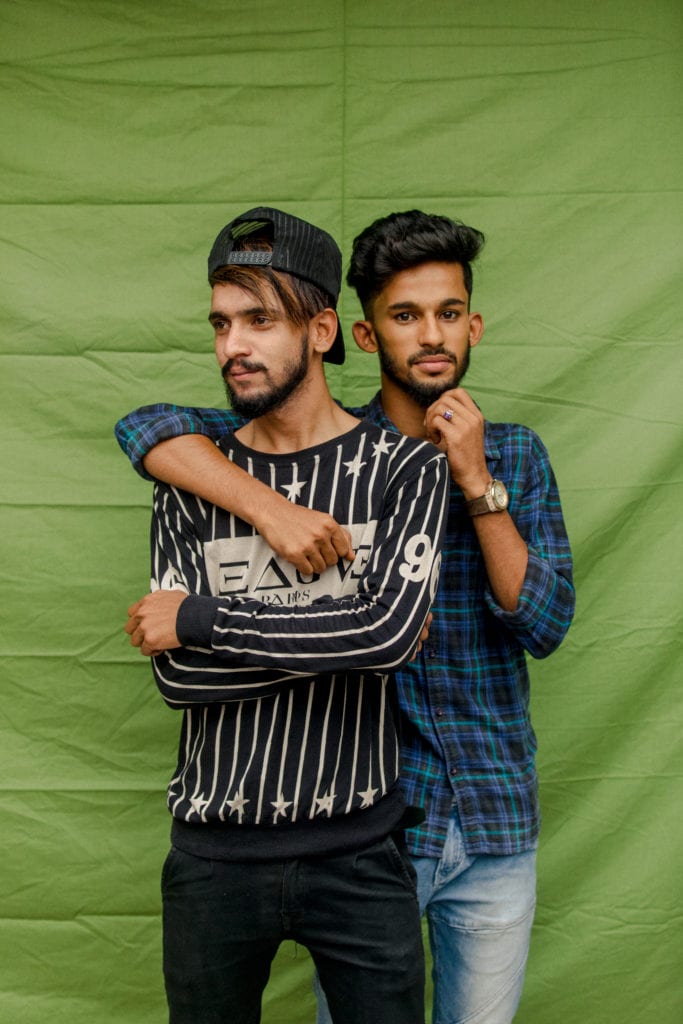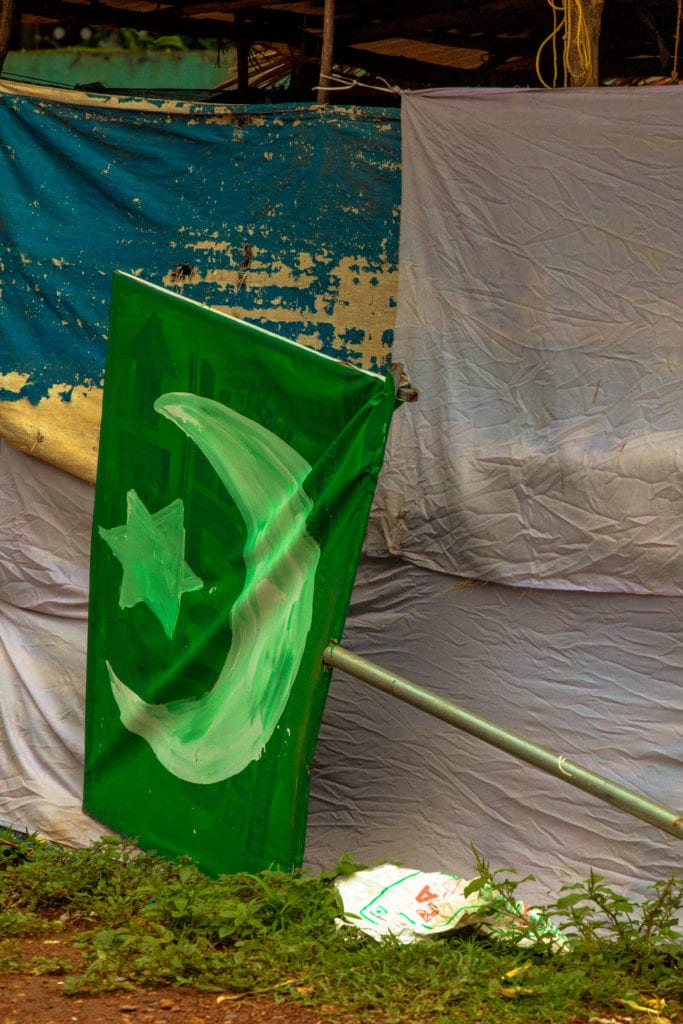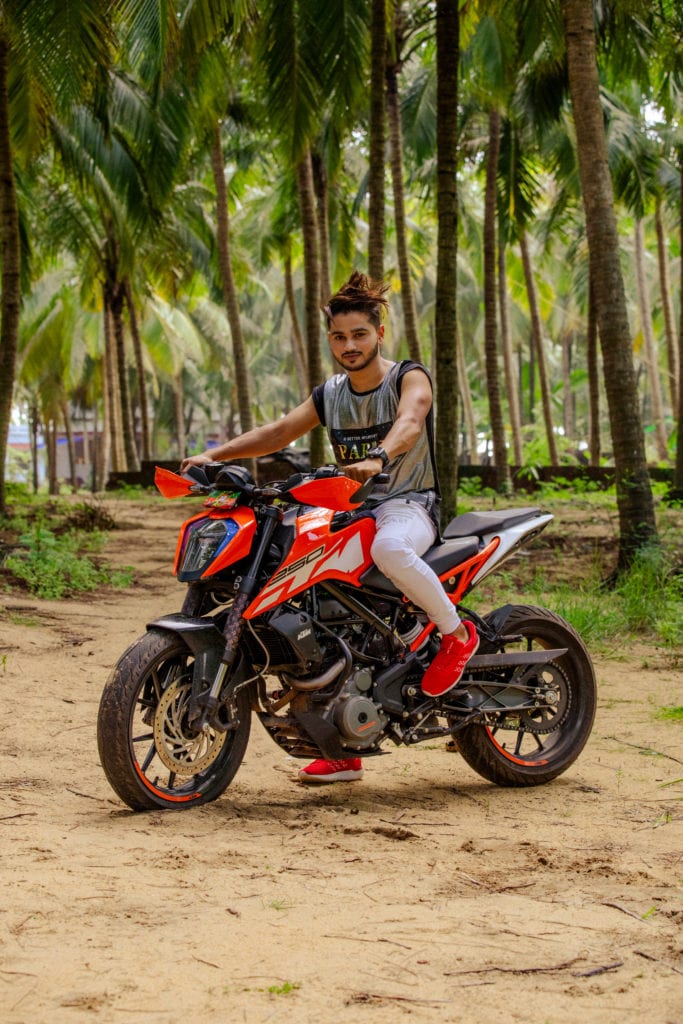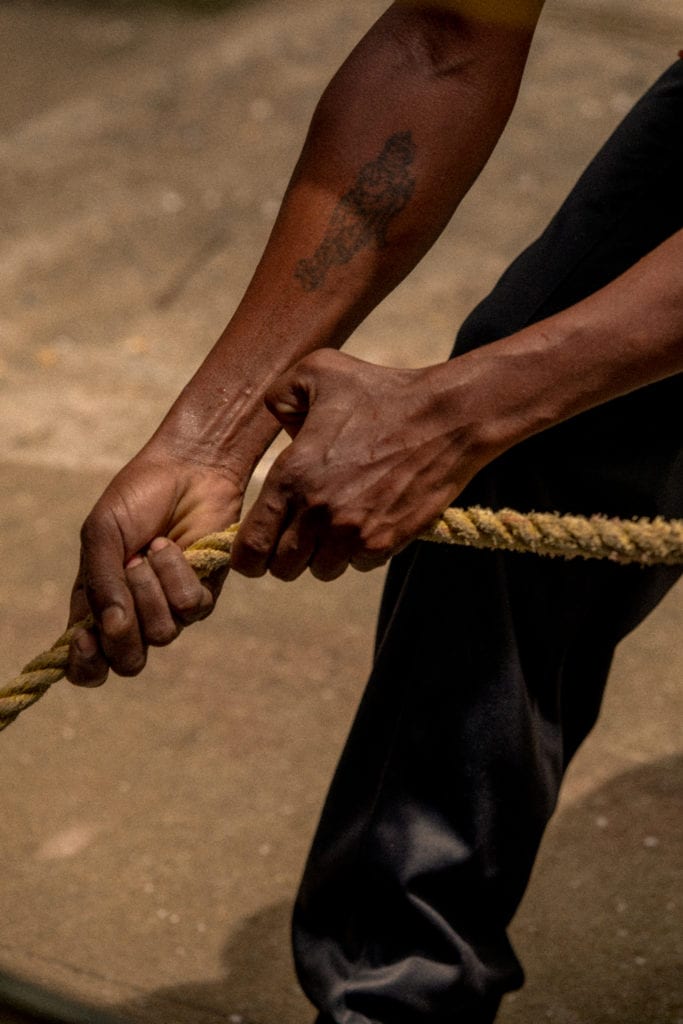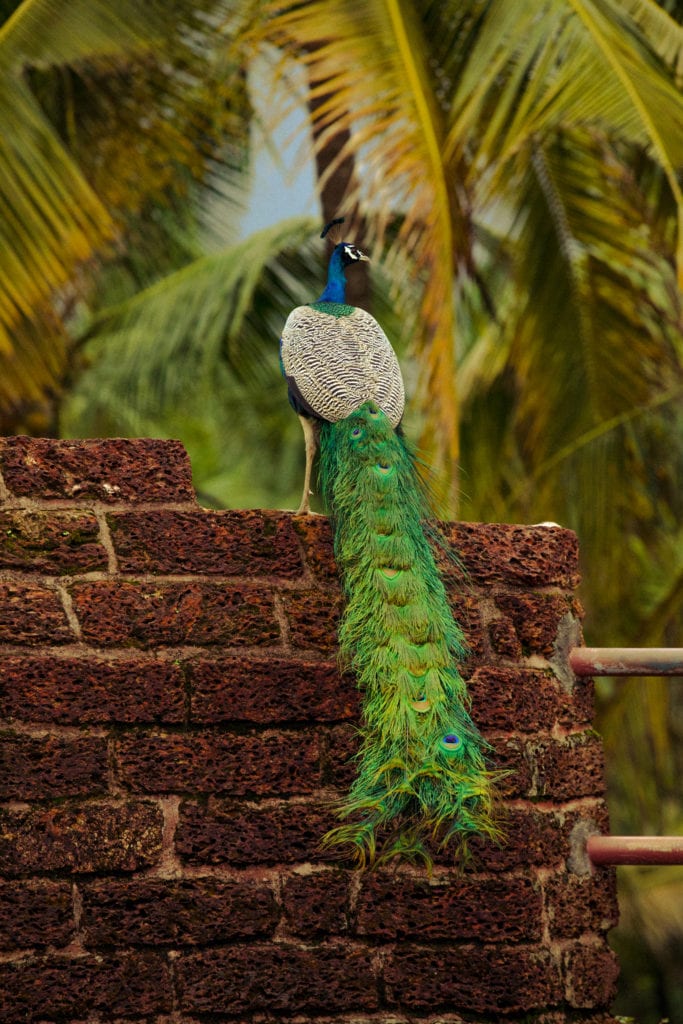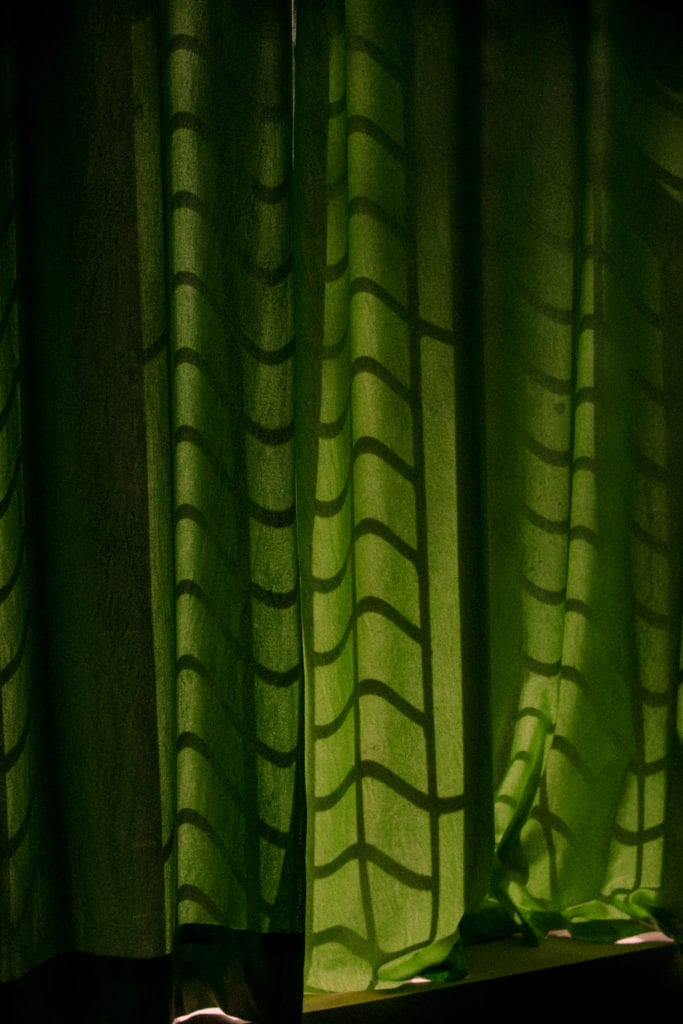“Kasaragod has its own language,” says a young boy in red, looking to camera with a group of friends, all dressed like him, arms around one another. “This is our language – beauty.”
In Kasaragod Boys, a new short film and photographic series by Vivek Vadoliya, the British artist explores the nature of identity and masculinity via an internet subculture based predominantly in Kasaragod, a town in Kerala, south India.
“India is rapidly changing, and becoming so hyper-digital,” explains Vadoliya. “From the farmer in the fields to the young kids on the streets: everyone has a mobile phone, and they have unlimited data, and they’re discovering the world through their hands.”
As a result, the access to international cultural influences has produced a variety of new aesthetic norms in Kasaragod. These include a self-defined group nicknamed Freakers, who sport hairstyles borrowed from South Korea and K-pop, clothing styles from Iran and South Africa, and performative social media accounts (on apps such as TikTok, musical.ly and Instagram) borrowing influence from Bollywood.
“They’re able to access all of these different culture points from around the world, play around with that, and make it their own,” says Vadoliya. His film – produced by Girls In Film productions – is graded according to the Freaker aesthetic: saturated colours for a juicy, hyperreal e ect, and interspersed with clips from the Freakers’ own social media accounts.
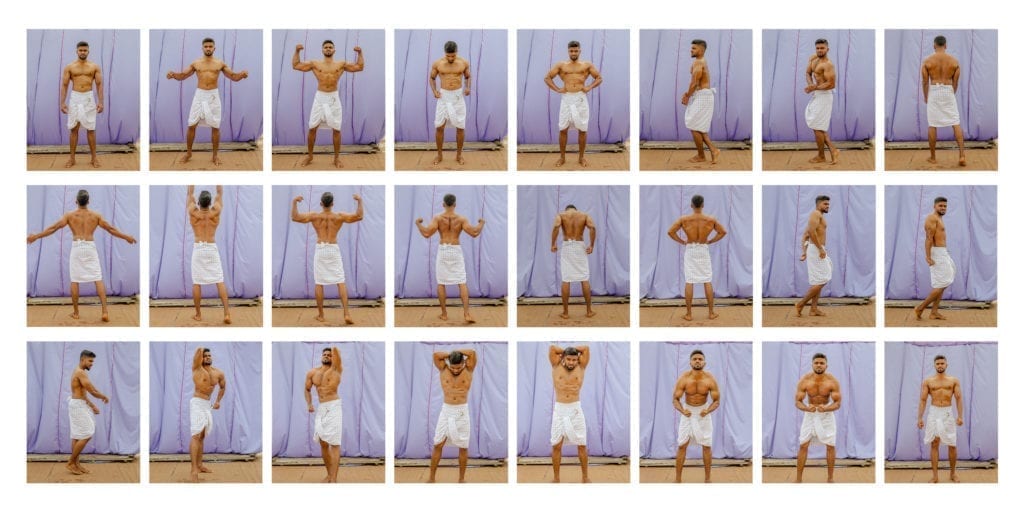
While making the work, Vadoliya looked to other projects that explored masculinity, such as Bharat Sikka’s Indian Men, and Joshua Osborne’s Habanaboy. The Freakers seem to be driven by a wish to explore and perform their masculine identity, especially given that the conservative culture surrounding them prevents them from having girlfriends, or spending time with women in public; so experimental haircuts and motorbikes are a way of letting off steam.
“It’s something that is done at a period of these boys growing up,” explains Vadoliya. “As soon as they get married they would change themselves to a normal Muslim boy, where they would be a lot more obedient to the laws of society.”
It took months of research and planning for Vadoliya to make connections with the young men featured in his project. “It was really difficult to reach out to them, because a lot of them have thousands and thousands of followers… You kind of get lost in it.”
On arrival in Kasaragod, however, Vadoliya was surprised by the difference between the Freakers’ social media personas and how they presented in the flesh. “They weren’t as ‘out there’ as I thought they would be. What they show online is definitely a more extreme style of what they like to expose themselves as in the public forum… At home they’re reserved, and often they’re good boys who go to the mosque three times a day, or look after mum.”
Kasaragod Boys captures both sides: the diligent role the Freakers play in society, and their escape from it through the identities they create on the bright screens of their phones.
This article was originally published in issue #7883 of British Journal of Photography magazine. Visit the BJP Shop to purchase the magazine here.
Vivek Vadoliya’s short film, Kasaragod Boys, is on show at London’s Barbican, commissioned as part of the Life Rewired series
vivekvadoliya.com
barbican.org.uk
